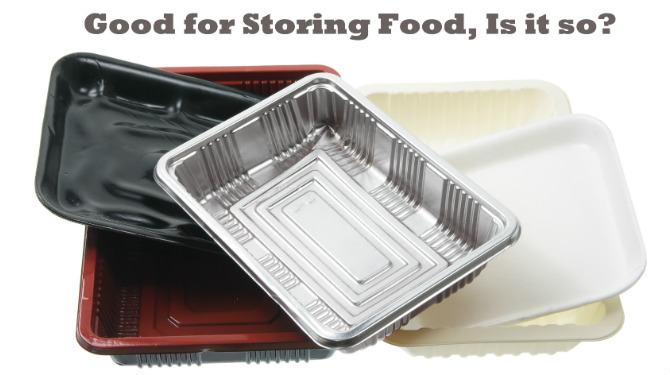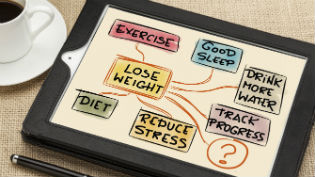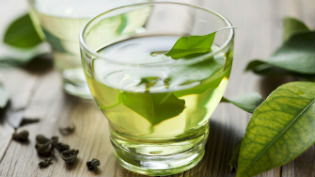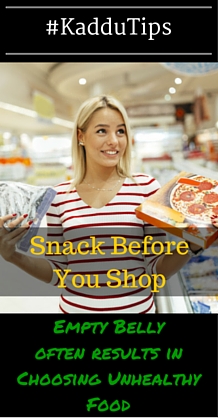
Packaging of the food is harming you.

Remember the times when meals for work or a picnic were carried in multiple steel “dabbas”, fast forward to today, majority of people prefer the compactness and lightness of the insulated plastic boxes/bags, aluminium foils or even newspapers at times. There are so many different types of containers available in the market, that you may be tempted to buy that glass look-a-like plastic box whereas your child will definitely go for his/her favourite cartoon print water bottle. But wait! Is your health going for it or going away from it? Let us tell you some facts about these attractive plastic and other packaging materials.
Plastic Containers
Plastic is made up of complex chemicals and some of them have been shown to leach onto your food/beverage. Chemicals like BPA (bisphenol A), phthalates and PVC(polyvinylchloride) enter your food from that fancy box and have been shown to cause adverse effect on hormones, mental development and functioning, birth defects and reproductive problems. It is more harmful to the vulnerable group of people (pregnant women, infants, children, old adults and individuals with poor immunity). BPA mimics the female hormone estrogen and causes problem in the functioning of the natural hormone in the body. Thus, choose products that say “BPA free” or “phthalate free”, they are relatively safer though it’s best to cut down on plastic use where ever possible.
More amount of chemicals are leached if the plastic is old, scratched and washed with harsh detergents.
Commercial packaged and bottled water bottles should not be reused as these plastic bottles are for one time use and should be discarded once used. Also, water bottles should be changed when they look dull and hazy. More chemicals leech out of older bottles.
Leeching of chemicals from plastic is many times higher when hot liquid or food is put in it. Hence, pouring hot beverage in plastic cups or getting takeaway in plastic boxes should be avoided.
Aluminium Containers & Foils
Another material which has recently come under scanner is aluminum in foil and food cans. Yes, the very same you use to keep your rotis warm!! Studies have shown that foods that are hot, acidic, spicy or salty when packed in aluminum foil caused leeching of aluminum from the foil onto the food, especially meat preparations.
Aluminum is everywhere. It is high in drinking water and is more easily absorbed from it. It is present as additive in foods. It enters into foods that are cooked in aluminum vessel like “dum biryani” or baked with aluminum foil. This metal has shown to increase the risk of brain related disorders like Alzheimer’s disease, Parkinson’s disease and dementia. Though it is metabolized and almost 99% cleared from the body by the liver, this can vary if the intake of the metal is high through uses as mentioned above.
The best ways to reduce excess aluminum consumption are as follows:
- Reduce the use of foils and wraps,
- Cooking in aluminum vessels that are lined with copper inside or switching to other material like steel vessels,
- Consume less of canned food, infant canned formulae and
- Prefer organic alternatives like ceramics, clay etc.
Though aluminum toxicity in body is not easily reached, its always better to reduce the ways of this metal reaching you.
Newspaper
Hot bajjis, pakoras, jalebis or vada pav, all these ever loved street foods are often served to you old newspaper. Yes, you will have something to read if you are bored or alone but your body will have to work more to remove the toxin that comes from the paper’s ink.
Besides the newspapers being carriers of germs, which can compromise the safety of food, the ink from paper has shown to leech into hot, oily foods which then enter your body. These inks are found to be toxic and may cause serious health issues, especially in the vulnerable group.
Though manufacturers claim the ink used is safe and does not permeate, studies have shown presence of some ink residue in foods wrapped in newspaper.
Using tissue paper or napkins is the best way to avoid making newspaper as your plate.
Styrofoam trays
Disposable plates also pose a risk as polystyrene; the main chemical can cause brain toxicity. Avoid these specially in parties for children.
So now it’s time you look for ways of reducing the ways in which these chemicals enter your body. They are present everywhere but every source counts. Try avoiding the sources which you can by replacing with other health friendly options such as using glass or ceramic containers for holding household groceries or steel dabbas for carrying lunch. After all health is wealth.













